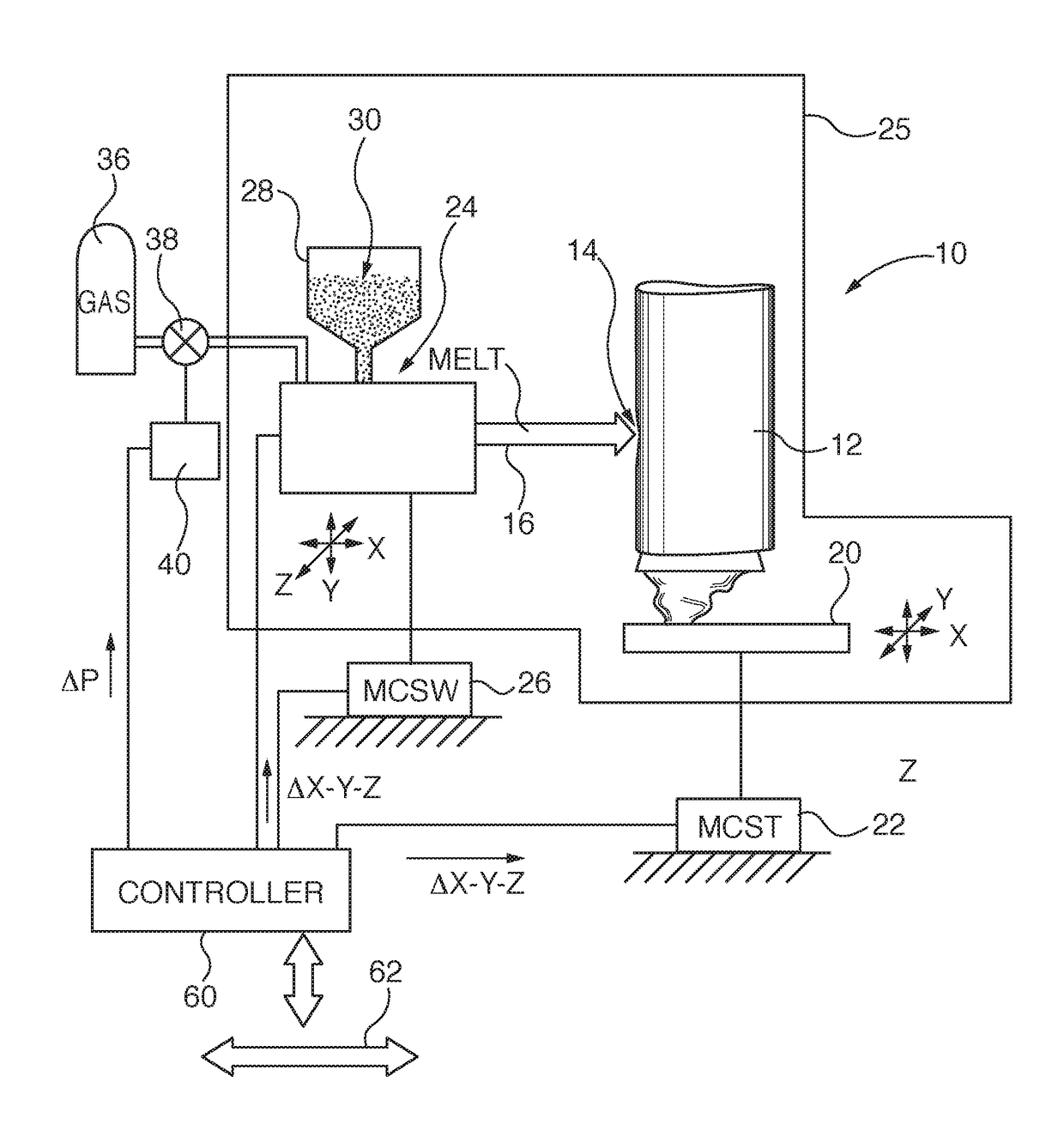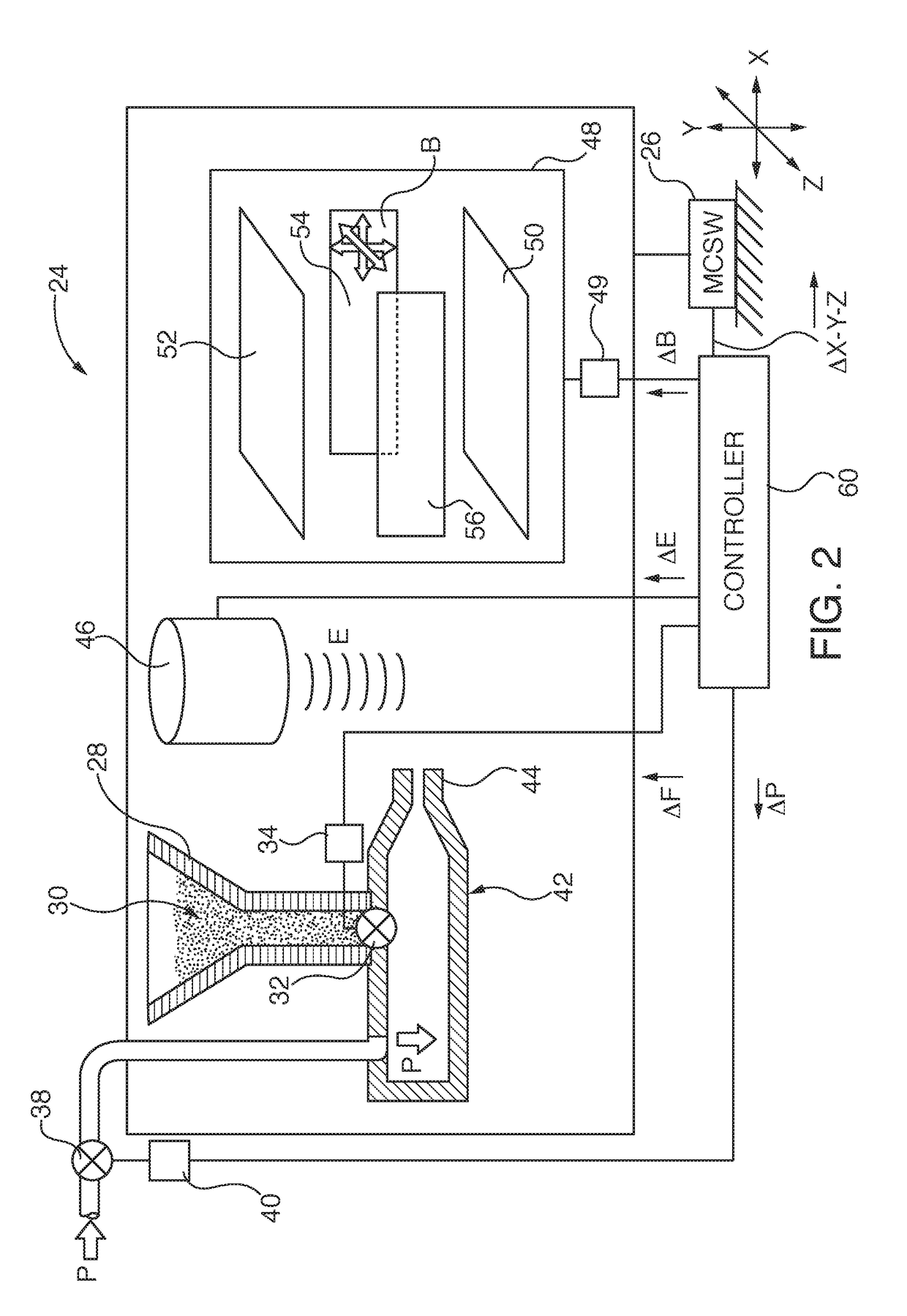Method and apparatus for levitation additive welding of superalloy components
a technology of additive welding and superalloy metal, which is applied in the direction of mechanical equipment, turbines, manufacturing tools, etc., can solve the problems of over melting of the substrate, overheating of the molten metal layer, and overheating of the superheating layer, so as to facilitate the application of minimal heat, facilitate the precise orientation of the weld cladding layer, and increase the surface dimension
- Summary
- Abstract
- Description
- Claims
- Application Information
AI Technical Summary
Benefits of technology
Problems solved by technology
Method used
Image
Examples
Embodiment Construction
[0014]Exemplary embodiments of the invention are utilized in additive welding systems for superalloy components for turbine engines. In some embodiments, the added weld material repairs a surface void in the component, so that original component dimensional specifications are restored. In other embodiments, the superalloy component is clad with a weld layer, in order to increase its surface dimensions. In accordance with embodiments described herein, welding is performed by propelling a stream of powdered filler, which includes superalloy powder filler, through a nozzle at a powder stream mass flow rate, with pressurized gas. The powdered filler stream is melted and agglomerated into a continuous melt stream with a laser or arc heating source located downstream of the nozzle. In some embodiments, the pressurized propulsion gas or auxiliary downstream gas is inert, or partially inert, to shield heated and melted powder from atmospheric reaction; especially oxidation. The melt stream ...
PUM
| Property | Measurement | Unit |
|---|---|---|
| temperature | aaaaa | aaaaa |
| melting point | aaaaa | aaaaa |
| void depth | aaaaa | aaaaa |
Abstract
Description
Claims
Application Information
 Login to View More
Login to View More - R&D
- Intellectual Property
- Life Sciences
- Materials
- Tech Scout
- Unparalleled Data Quality
- Higher Quality Content
- 60% Fewer Hallucinations
Browse by: Latest US Patents, China's latest patents, Technical Efficacy Thesaurus, Application Domain, Technology Topic, Popular Technical Reports.
© 2025 PatSnap. All rights reserved.Legal|Privacy policy|Modern Slavery Act Transparency Statement|Sitemap|About US| Contact US: help@patsnap.com



